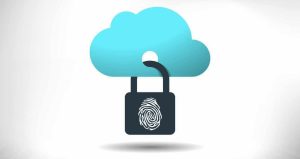In 2024, cybersecurity threats continue to evolve, presenting new challenges for businesses, governments, and individuals. As cybercriminals become more sophisticated, the range and complexity of these threats grow, affecting industries across the globe. The most prominent cybersecurity threats of 2024 include malware, social engineering attacks, advanced persistent threats (APTs), and ransomware. In this article, we will explore these threats in detail, providing an analysis of their impact, as well as examples and strategies to mitigate them.
1. Malware Threats
Malware, or malicious software, remains a primary threat to cybersecurity in 2024. This type of attack encompasses various forms, including viruses, worms, ransomware, spyware, and more. Each type of malware has distinct characteristics but shares the common goal of causing damage to systems, stealing data, or both.
Examples of Malware Attacks:

- WannaCry (2017): A ransomware attack that exploited vulnerabilities in Microsoft’s Windows operating system. The attack affected more than 230,000 computers worldwide, demanding ransom in Bitcoin.
- Zeus (2019): A sophisticated Trojan horse malware targeting financial institutions, allowing attackers to steal banking information and credentials.
2. Social Engineering Attacks
Social engineering exploits human psychology to bypass security protocols, often by tricking individuals into divulging sensitive information. In 2024, these attacks have become more creative and harder to detect. Phishing, vishing (voice phishing), smishing (SMS phishing), and pretexting are the most common forms of social engineering attacks.
Phishing Variants:
- Spear Phishing: Highly targeted emails that appear to be from trusted sources, such as colleagues or service providers.
- Smishing: Attackers use text messages to trick victims into clicking on malicious links or sharing personal information.
| Phishing Variant | Method | Example |
|---|---|---|
| Spear Phishing | Targeted email with malicious links or files | An email claiming to be from HR requesting bank details |
| Vishing | Phone call impersonating a trusted entity | Caller claims to be from your bank, asking for OTP |
| Smishing | Text message with a link or instruction | Text from a fake courier company asking to track a package |
3. Advanced Persistent Threats (APTs)
APTs are stealthy, prolonged attacks where hackers gain unauthorized access to a network and remain undetected for extended periods. Unlike other cyber threats that seek immediate financial gain, APTs are focused on long-term objectives, such as data theft, espionage, or sabotage.
Examples of APT Attacks:
- Stuxnet (2010): A malware used to sabotage Iran’s nuclear program by targeting SCADA systems.
- APT29 (2019): Russian hacking group APT29, also known as Cozy Bear, targeted several countries’ government institutions to steal sensitive information.
4. Ransomware
Ransomware has emerged as one of the most disruptive cybersecurity threats in recent years. Attackers encrypt a victim’s files and demand payment to restore access. In 2024, Ransomware as a Service (RaaS) has gained popularity, allowing cybercriminals to rent out their malware tools to others, thereby increasing the frequency of attacks.
Examples of Ransomware:
- Colonial Pipeline (2021): One of the largest ransomware attacks, targeting the oil pipeline system, resulting in widespread fuel shortages across the U.S.
- JBS Foods (2021): Ransomware attack on one of the world’s largest meat processing companies, disrupting operations and supply chains.
| Ransomware Incident | Impact | Resolution |
|---|---|---|
| Colonial Pipeline | Shutdown of fuel distribution | Company paid $4.4 million in Bitcoin ransom |
| JBS Foods | Disruption to global food supply | Paid $11 million in ransom to restore operations |
5. Phishing Variants

Phishing attacks have become more complex in 2024, with criminals using advanced techniques to trick individuals and organizations. Spear phishing, in particular, has emerged as a highly targeted form of phishing, where attackers craft emails tailored to specific individuals or departments.
Phishing Example:
- 2023 Zoom Phishing Scam: Attackers sent emails disguised as Zoom invitations to exploit remote workers, gaining unauthorized access to sensitive business data.
6. Insider Threats
Insider threats involve employees or individuals with access to an organization’s data who misuse that access for malicious purposes. These attacks can be deliberate or accidental, but both types are difficult to detect since the attacker already has legitimate access.
Insider Threat Example:
- Capital One Breach (2019): An insider with legitimate access to AWS misconfigured the security protocols, exposing sensitive data of over 100 million customers.
7. Distributed Denial of Service (DDoS)
DDoS attacks overwhelm a system by sending an overwhelming amount of traffic, causing legitimate users to be denied access. These attacks are frequently used to disrupt online services and websites, with attackers leveraging botnets to amplify the damage.
Example of DDoS Attack:
- GitHub Attack (2018): The largest recorded DDoS attack on GitHub, using amplification techniques to send over 1.35 terabits per second (Tbps) of traffic to the site, resulting in an outage.
| Attack Type | Method | Impact |
|---|---|---|
| DDoS | Overload system with traffic | Disruption of services, website outages |
| Man-in-the-Middle | Intercept communications | Theft of login credentials or sensitive data |
8. Man-in-the-Middle (MitM) Attacks
MitM attacks involve intercepting communication between two parties to steal or manipulate information. Insecure networks, such as public Wi-Fi, are often used to launch these attacks, with hackers gaining access to sensitive information like passwords or financial details.
Example of MitM Attack:
- Coffee Shop Wi-Fi Attack: Hackers intercept communication between users and the Wi-Fi network at a coffee shop, stealing sensitive information such as login credentials and credit card details.
9. Cryptojacking
Cryptojacking occurs when attackers hijack a victim’s computing resources to mine cryptocurrency without their knowledge. Although less noticeable than other forms of cyberattacks, cryptojacking can significantly slow down systems and result in increased energy consumption.
Example of Cryptojacking:
- Tesla (2018): Hackers exploited a vulnerability in Tesla’s cloud environment to run cryptocurrency mining operations, significantly impacting their cloud infrastructure.
10. Supply Chain Attacks
Supply chain attacks exploit vulnerabilities in a company’s supply chain, often through compromised software updates or third-party vendors. These attacks can have wide-reaching consequences, as they can spread to multiple organizations.
Example of Supply Chain Attack:
- SolarWinds (2020): Hackers inserted malicious code into a software update, affecting thousands of businesses and government agencies worldwide.
11. Cloud Security Threats

With the rise of cloud computing, cloud security has become a major concern. Misconfigured cloud environments and inadequate access controls can expose sensitive data to hackers, leading to significant breaches.
Cloud Security Threat Example:
- Microsoft Azure Breach (2022): A vulnerability in Microsoft Azure’s cloud infrastructure exposed thousands of customer databases, leading to potential data breaches.
12. IoT Attacks
The Internet of Things (IoT) continues to expand, with billions of connected devices worldwide. Unfortunately, many of these devices lack proper security measures, making them easy targets for hackers. IoT attacks can involve hijacking devices for botnets or exploiting vulnerabilities in industrial systems.
Example of IoT Attack:
- Mirai Botnet (2016): A massive botnet of IoT devices was used to launch a DDoS attack, causing widespread internet outages across the U.S.
13. Nation-State Attacks
Nation-state attacks involve cyber operations sponsored by governments to achieve political, economic, or military objectives. These attacks are often sophisticated and target critical infrastructure, such as power grids, financial systems, and defense organizations.
Example of Nation-State Attack:
- Russian Hackers (2022): Russian government-sponsored hacking groups targeted Ukraine’s critical infrastructure, using malware to disrupt energy supplies during the conflict.
14. Privacy Concerns and Data Breaches
Data breaches remain a significant concern in 2024, with increasing regulations aimed at protecting consumer data. However, many organizations continue to suffer from breaches due to inadequate security measures.
Major Data Breach Example:
- Equifax Breach (2017): One of the largest data breaches in history, compromising the personal data of over 147 million people due to unpatched vulnerabilities.
15. Advanced Persistent Threats (APTs)
APTs are long-term, targeted cyberattacks designed to steal sensitive information or disrupt operations. These attacks often go undetected for months or years, allowing attackers to gather valuable intelligence.
APTs Example:
- APT29 (2020): The Russian hacking group was involved in prolonged attacks against government agencies, stealing sensitive data.
Conclusion:
In 2024, cybersecurity threats have become increasingly complex and sophisticated. From ransomware to social engineering and supply chain attacks, organizations face a multitude of challenges in safeguarding their data and systems. Understanding these threats, staying informed about emerging attack vectors, and implementing robust security measures are crucial steps in mitigating cybersecurity risks.












